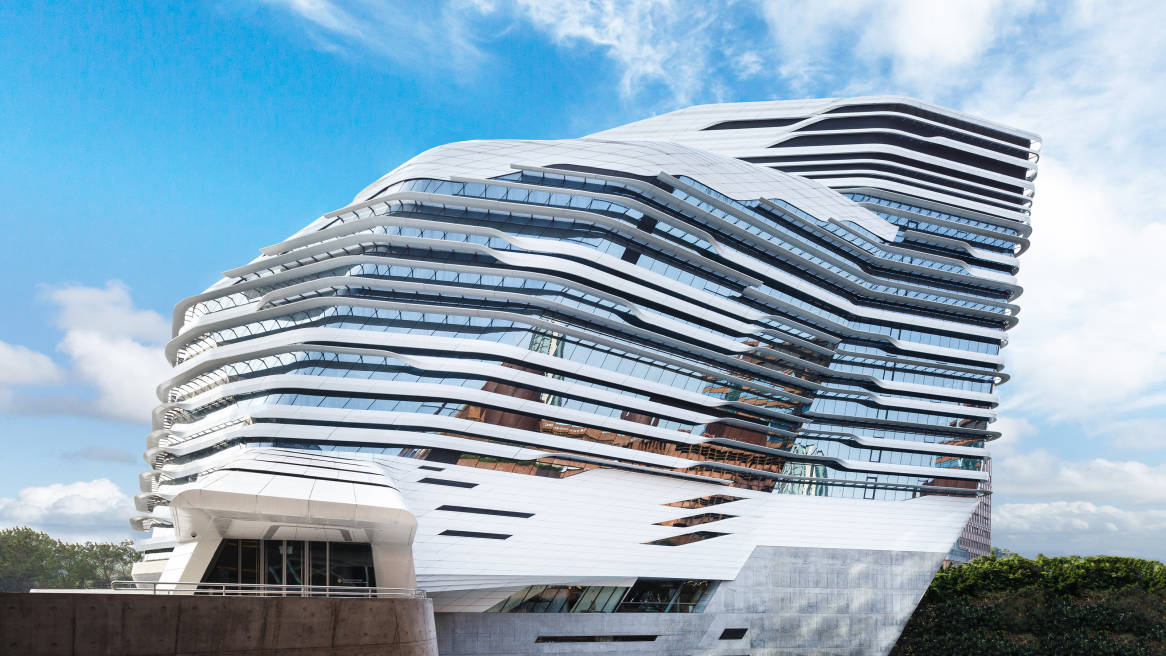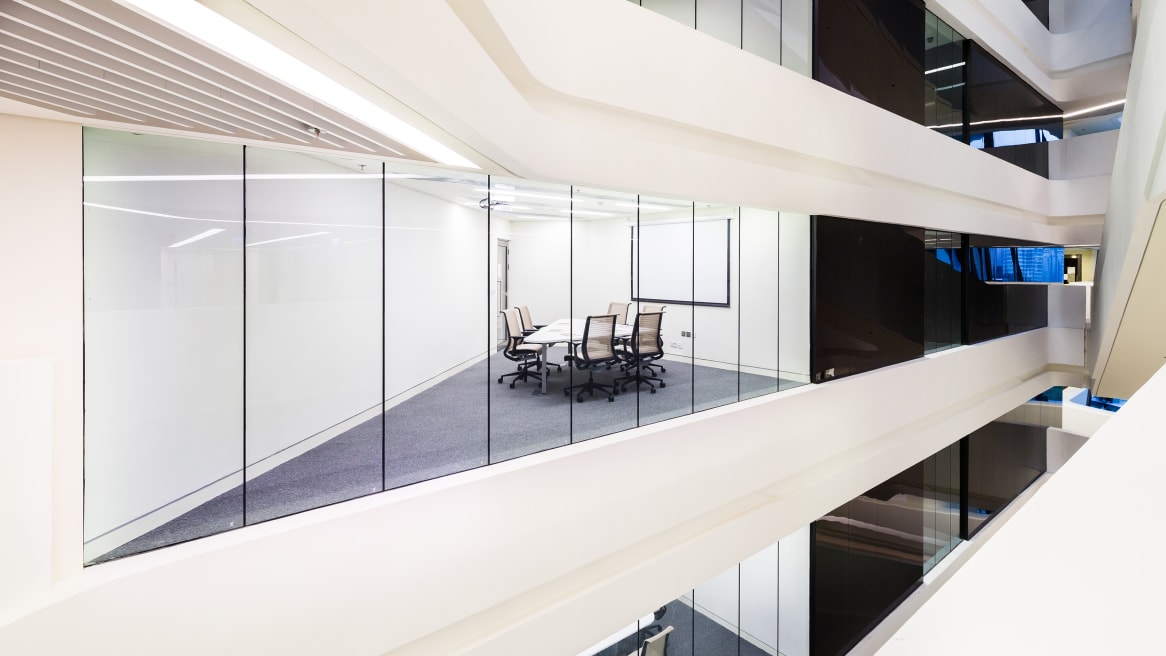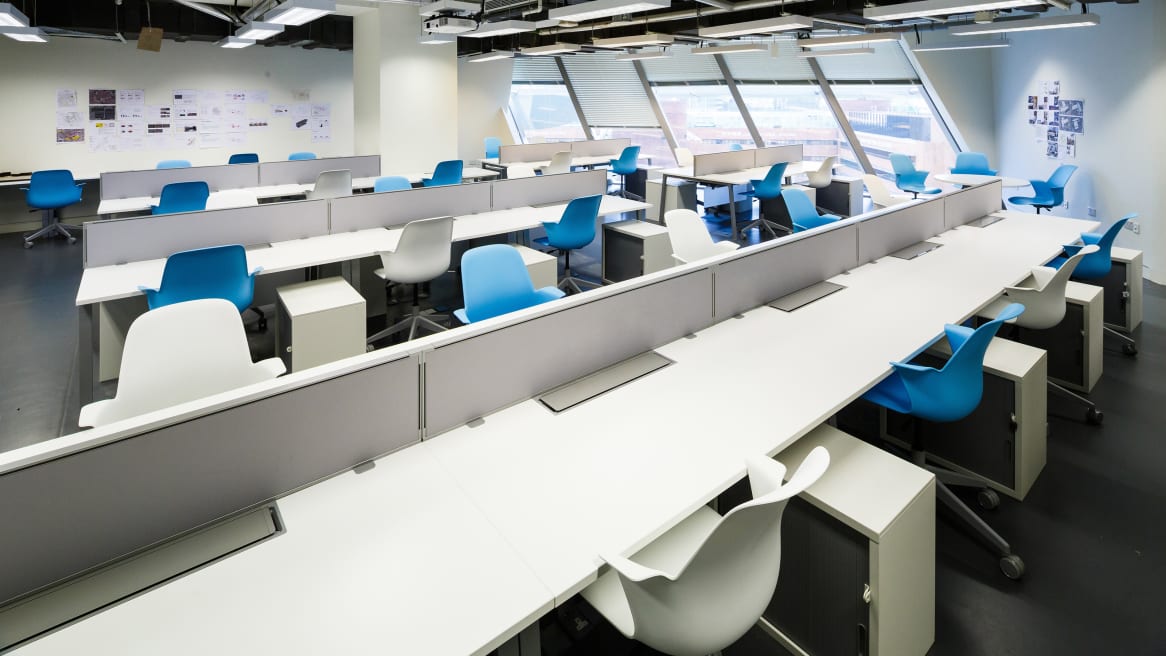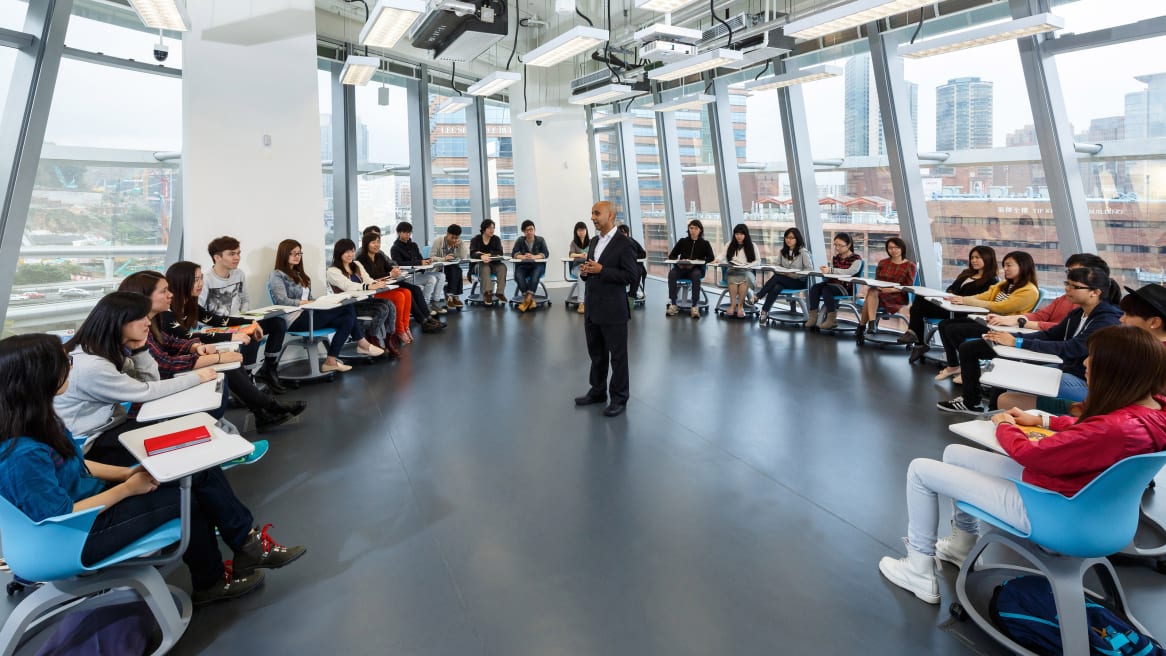Polytechnic University Innovation Center
The recently opened Innovation Tower, which houses the School of Design at Hong Kong Polytechnic University is a 13-floor case study of Steelcase furniture in the education environment. The striking building, designed by renowned British architect Zaha Hadid, is home to some 1800 students each day, features Steelcase furniture throughout the building including classrooms, project rooms, design studio, staff office, and meeting rooms.
Yet, perhaps the most dynamic example of change in the new building is the choice of Node chairs in the classrooms, a simple choice which enabled the Design School to revolutionize modes of teaching. In the previous building, students sat in traditional chairs in a static learning environment. The Node supports a variety of student learning styles by allowing quick and seamless transitions from one teaching mode to the next, creating flexible and barrier-free classrooms.
The castors make it possible to move from lecture mode to team-based learning, and back, in moments. The swivel seat allows students to easily rotate and view information being shared throughout the classroom. The open seat design enables them to change postures and positions, offering comfort in multiple settings. And the integrated bag storage means students can keep their bags, books and gear close at hand, and out of the way, at all times.






